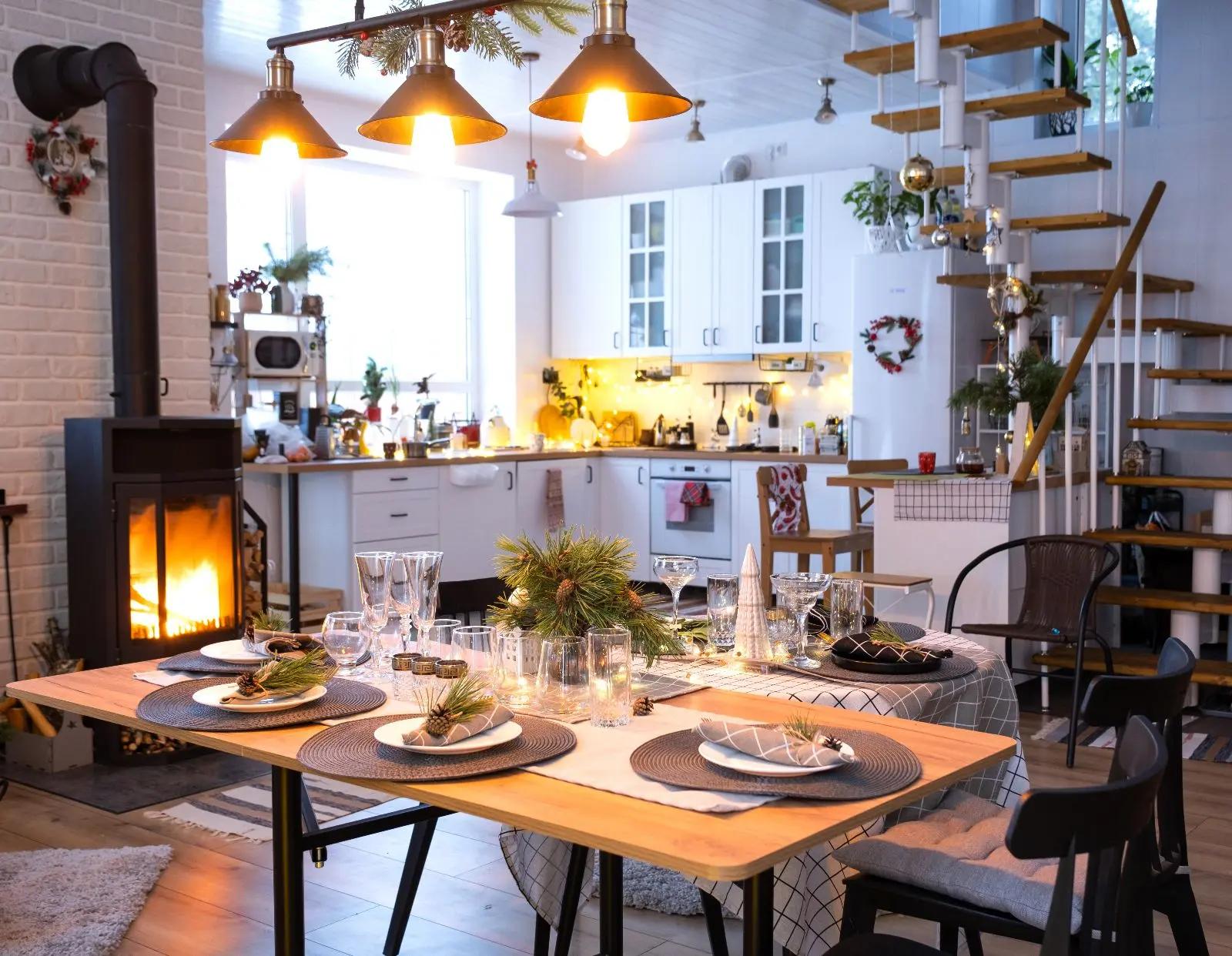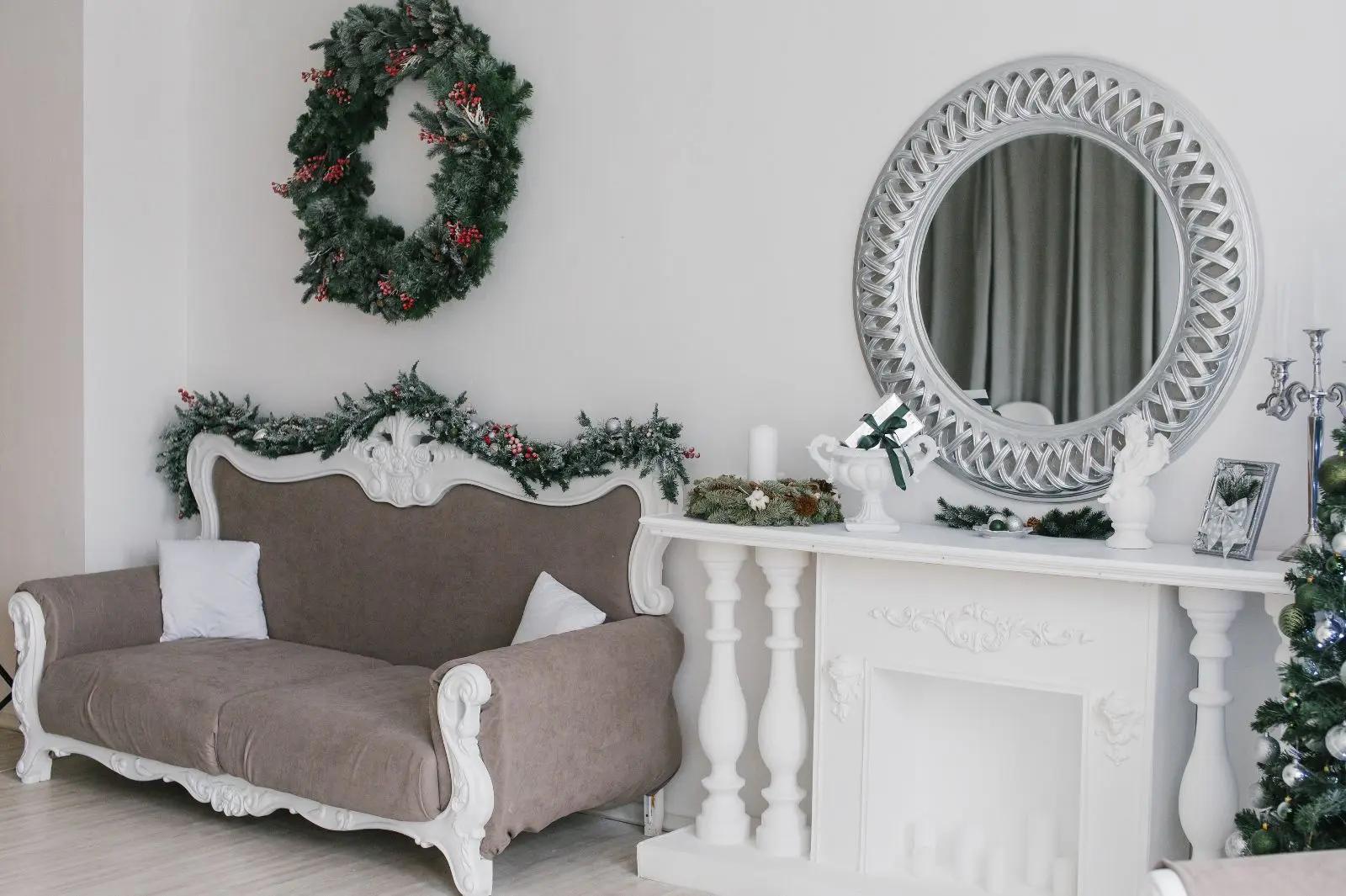
Decorating our home can be an exciting task, but it can also be a challenge full of common mistakes that can affect the final result. Whether you're renovating a room or decorating a new space, avoiding these mistakes can help you create a welcoming, functional, and aesthetically pleasing environment. Below, we present a detailed guide on the most common decorating mistakes and how to avoid them so you can achieve the home of your dreams.
Lack of order and cleanliness
One of the most basic and frequent mistakes when decorating is not keeping the space tidy and clean. A messy environment not only affects the aesthetic appearance, but can also hinder the decorating process. Visual clutter can make even the prettiest decor look bad.
- Before you start decorating, make sure the space is completely clean and organized. This includes cleaning surfaces, organizing objects, and throwing away what you no longer need.
- Maintain order while decorating to have a clear view of progress.
- Put things in their place
Go overboard with white and have a very cold and unwelcoming decoration
White is a popular color in decoration due to its ability to make spaces look larger and brighter. However, overusing white can result in a cold and unwelcoming decoration.
- Introduce warm colors and textures through accessories such as cushions, blankets, rugs and artwork.
- Use different shades of white and beige to add depth and warmth to the space.
- Add some decorative elements that add personality to the room.
- Use textures to add warmth to the decoration.

Mix decorative styles that have nothing to do with each other
Mixing decorative styles can result in a chaotic and messy environment if not done carefully. Combining elements from different styles without a coherent plan can make your decor look confusing.
- Choose a main style for your decoration and add some touches of other styles.
- Make sure the different styles you mix have something in common.
- Don't be afraid to experiment, but do it carefully.
Making a mistake with the size of the furniture
Choosing the wrong size furniture is a common mistake that can make a room look disproportionate and unfunctional. Furniture that is too large can clutter the space, while furniture that is too small can look lost.
- Carefully measure your space before purchasing furniture.
- Consider the scale and proportion of the furniture in relation to the room.
- Use interior design apps to visualize how furniture will fit into your space.

Choose lamps that are uncomfortable, difficult to clean or that do not illuminate correctly
Lighting is crucial in decorating, but choosing lamps that are not practical can affect both the functionality and aesthetics of the space. Lamps that are difficult to clean or do not provide enough light can be problematic.
- Opt for lamps that are easy to maintain and provide the right amount of light for each area.
- Consider combining different types of lighting, such as ceiling lights, floor lamps, and table lamps, to create a well-lit environment.
- Use low consumption light bulbs to save energy.
Not getting the colors of the walls and accessories right
Choosing the wrong colors for walls and accessories can completely change the atmosphere of a room, making it feel uncoordinated or unappealing.
- Test the colors before applying them to everything. gives the wall.
- Paint small sections and see how they look at different times of the day in natural and artificial light.
- Choose colors that complement existing furniture and accessories.
- Combine warm and cold colors to create a balanced environment.

Place all furniture against the wall
Pushing all your furniture against the wall can make a room feel empty and less welcoming. This arrangement can limit the functionality and flow of the room.
- Create conversation areas.
- Use furniture to define spaces.
- Place some furniture, such as sofas and chairs, away from the walls to give the design more dynamism.
- Use rugs to delimit areas and add warmth.
- Don't be afraid to move furniture around to see what works best.
Do not leave passageways and get uncomfortable decoration
It is important to leave enough passageways to ensure that the room is functional and comfortable. Blocking traffic flow with furniture can make the space feel cramped and uncomfortable.
- Plan the arrangement of the furniture taking into account the passage areas.
- Make sure there is enough space to move freely without obstacles.
- Consider circulation and ergonomics when arranging furniture.
- Make sure there is a minimum space of 80 cm between furniture.

Not choosing the right amount of decorative accessories
Too many accessories can make a room look cluttered, while too few can make it look empty and lifeless. The key is finding the right balance.
- Choose a moderate amount of decorative accessories.
- Select decorative accessories that you really like and that have a purpose.
- Group accessories into harmonious sets and vary heights and textures to add visual interest.
- Don't be afraid to edit and delete objects if the space feels crowded.
Leave walls and windows bare
Bare walls and windows can make a room feel incomplete and lacking character. Ignoring these elements can result in an unwelcoming space.
- Decorate the walls with artwork, mirrors or floating shelves.
- Use curtains, blinds or blinds to dress up the windows and add texture and color.
- Use plants to decorate the walls and windows.
- These elements not only decorate, but can also improve the functionality of the space.
Not giving importance to lighting
Inadequate lighting can ruin even the most beautiful decoration. Lack of light or incorrect lighting can make a room feel dark and uninviting.
- Invest in adequate lighting for each space.
- Use a combination of general lights, task lights, and accent lights to create a balanced ambience.
- Consider installing dimmers to adjust the lighting according to the occasion.
Lack of storage
Lack of storage can lead to constant clutter, which negatively affects the appearance and functionality of a room. It is important to have enough space to store and organize your belongings.
- Integrate storage solutions into your design.
- Use multifunctional furniture, such as ottomans with hidden storage, shelves and built-in wardrobes.
- Keep clutter under control with organizers and baskets.
Try to decorate everything in one day
Trying to decorate everything in a single day can be overwhelming and lead to hasty decisions that don't reflect They distance your style or needs. Decorating is a process that requires time and consideration.
- Take your time to plan and execute your decoration.
- Work on one room at a time and enjoy the process.
- Allow yourself to experiment and make changes as you go to create a space you really love.
Avoiding these common decorating mistakes can help you create a home that is functional, inviting, and aesthetically pleasing. Remember that the key is planning, organization and attention to details. Don't be afraid to experiment and adjust your decor until you find the perfect balance for your space. Happy decorating!









comments